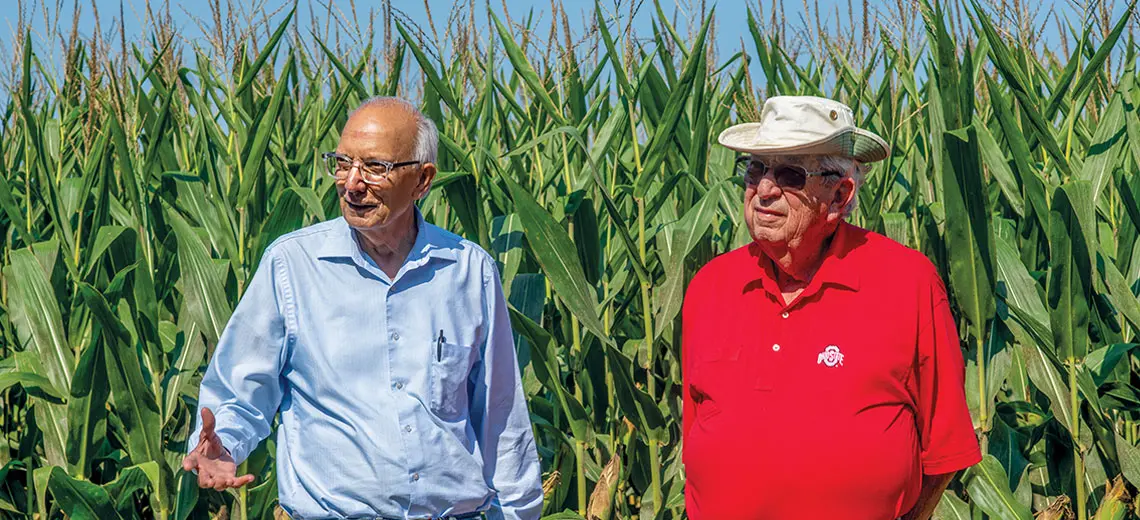Farm science leader: ‘Everybody thought we were crazy’
Bill Richards ’53 began experimenting with no-till farming at Ohio State in the 1960s and spent his career spreading its benefits.

Rattan Lal visits Bill Richards at Richards’ family farm in Circleville, Ohio. (Photo Jo McCulty ’84, ’94 MA)
Bill Richards ’53 looks back on his days as a college student and chuckles about being the person in class who asked the questions.
Richards credits Ohio State for nurturing his inquisitive nature, which led him to adopt regenerative farming techniques and advocate for them as head of the U.S. Department of Agriculture’s Natural Resources Conservation Service from 1990 to ’93 under President George H.W. Bush.
“Ohio State, and the contacts and education I got there, really taught me that you can dream, you can try different things, you can innovate,” says Richards, a 1994 Ohio Agricultural Hall of Fame inductee.
After graduating, Richards took interest in regenerative farming when Ohio State professors David Van Doren and Glover Triplett began studying long-term effects of tillage and crop rotation. The Triplett-Van Doren plots were established in 1962 near Wooster, Ohio, and more were added a year later near London and Hoytville, Ohio. They’re the world’s longest continually maintained no-tillage research plots.
“I’m proud of the fact that Ohio State is really the cradle of no-till,” says Richards, who has run his family farm in Circleville, Ohio, since 1954.
Video: Regenerative Agriculture

This video, which runs less than 2 minutes, explains how no-till farming practices benefit soil, improve crop yields and prevent air pollution. (Motion graphic by Matt Stoessner)
The Triplett-Van Doren experiments led Richards, after he graduated, to forgo tilling his own land and to leave stalks from the previous year’s crops on the fields. He credited George Hamrick ’51, ’59 MS for encouraging farmers to use no-till farming in his role as an Ohio State County Agricultural Extension agent from 1955 to 1984.
“Everybody thought we were crazy because we were really doing something different, but we had the science behind us,” says Richards, who befriended Rattan Lal in 1988.
Richards says no-till farming became more popular during his tenure at the U.S. Department of Agriculture, but the United States has since fallen behind Australia, Brazil and Canada in its use because the financial payoff takes longer than the short-term needs of many farmers who rent their land.
Still, Richards is optimistic that regenerative agriculture will spread to help feed the world’s growing population while also combating climate change.
“Science will win in the long term,” Richards says.



